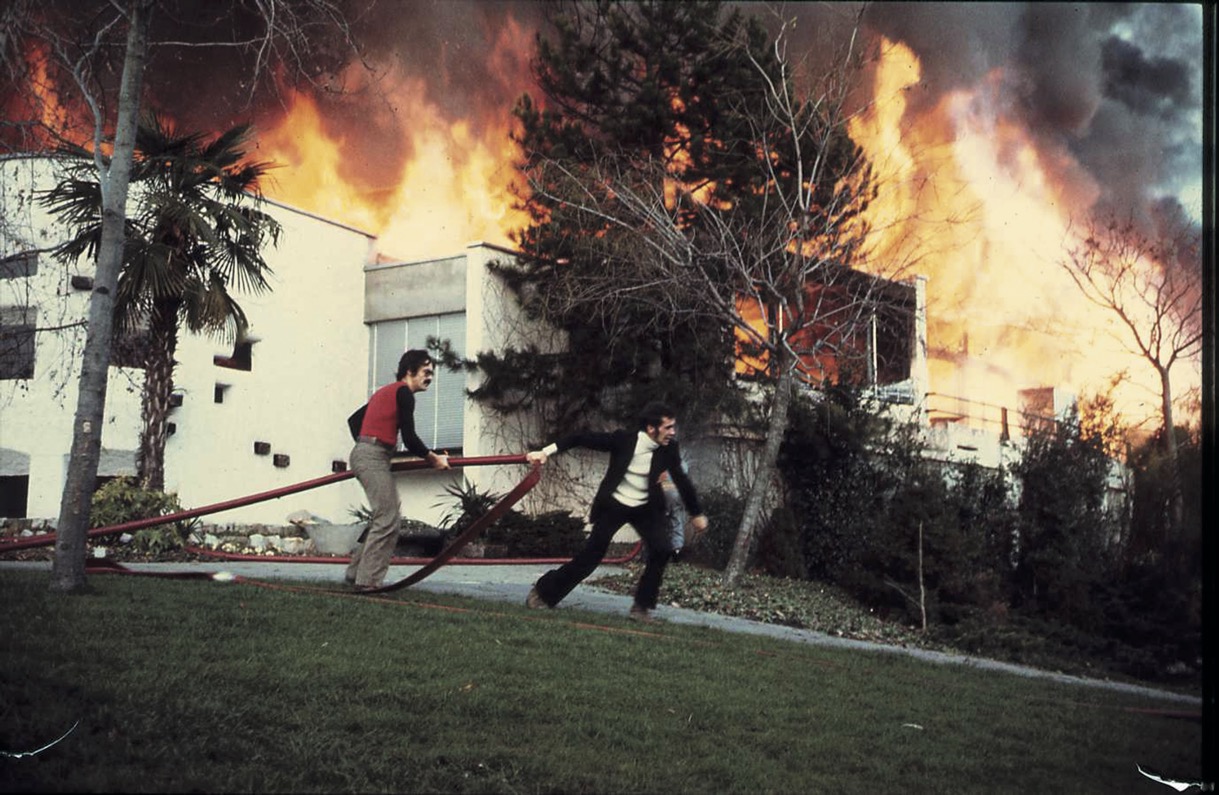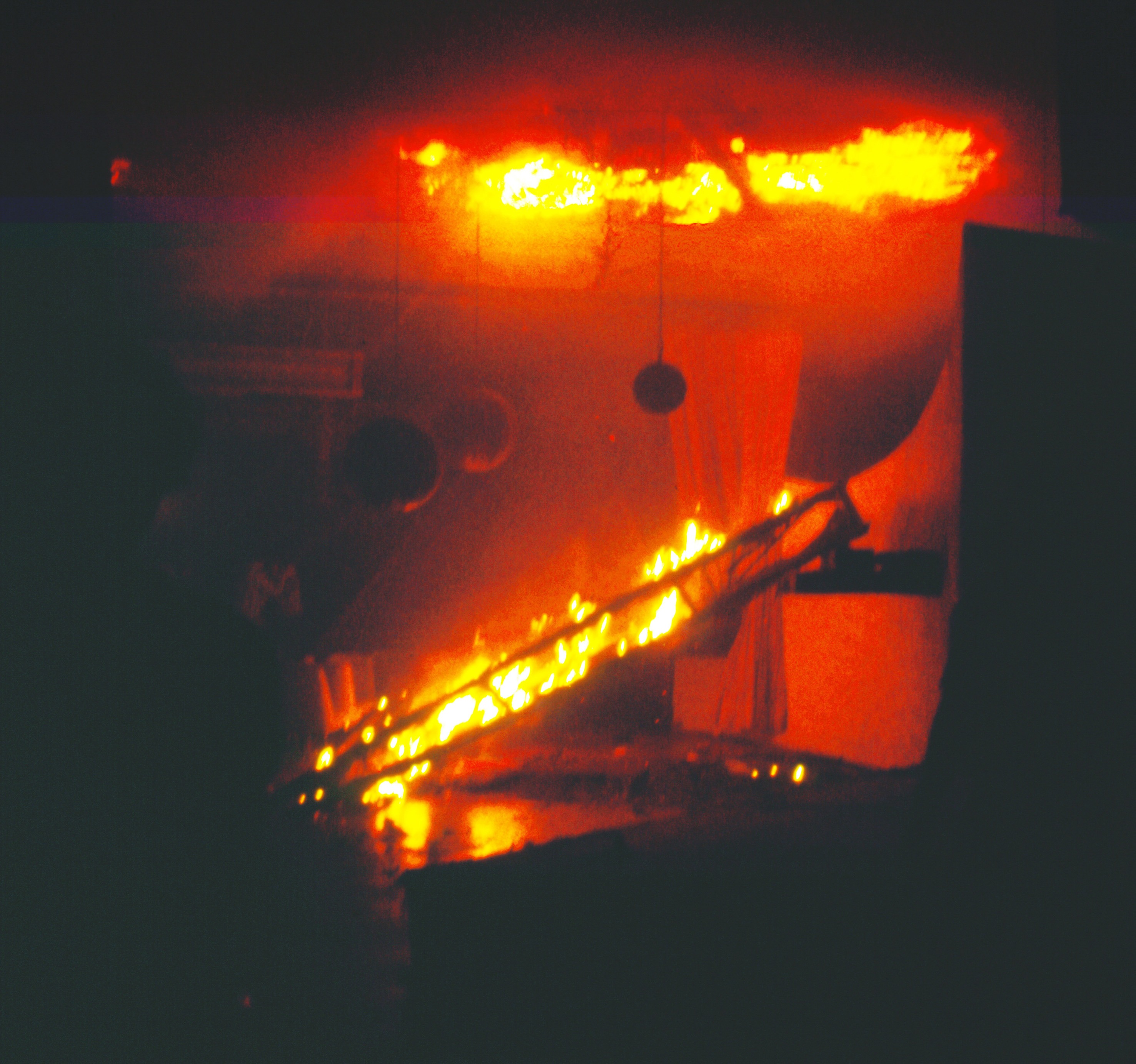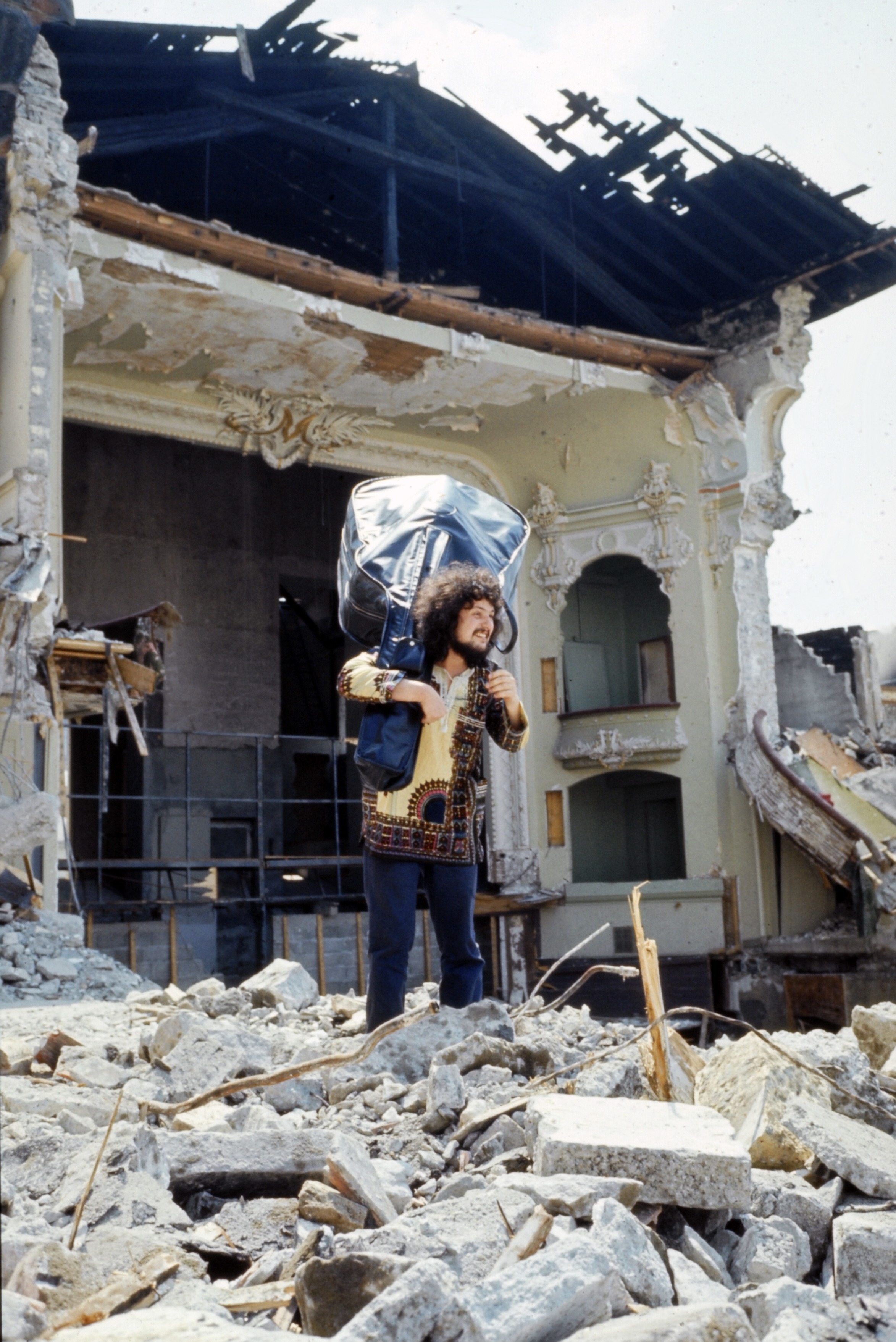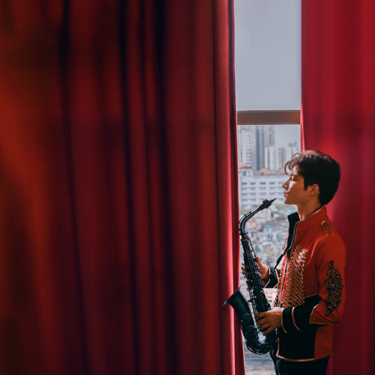On December 4, 1971, a fire in a small Swiss town gave birth to a worldwide hit… We look back at this incredible story that put Montreux and its Festival on the map.
“Fire!” On that famous 4th of December 1971, around 4.15pm, Frank Zappa’s concert at the Montreux Casino was interrupted. The flames invaded the building, the smoke was visible far and wide. No casualties were reported, but for Claude Nobs, it was a disaster: the venue that hosted his jazz festival every summer (he had just celebrated its 5th edition there), as well as the pop concerts organised throughout the year with bands such as Pink Floyd or Led Zeppelin, collapsed before his eyes.
Barely recovered from the shock, Claude was faced with an urgent challenge: finding a new recording venue for Deep Purple. He didn’t know it yet, but the British band will single-handedly turn the tragedy into gold, the fire into a worldwide hit and, of course, Monsieur Nobs into “Funky Claude”.

THE INITIAL PLAN: THE CASINO
The hard rock band was in Montreux to record their next album at the Casino with a mobile studio borrowed from the Rolling Stones. The location was perfect: the musicians did not want a standard recording studio and they were already familiar with the Montreux Casino, having performed there in 1969. As a sidenote, a girl named Michaela Maiterth, then aged 13 years old, was there that night and discovered her passion for live music. Twenty years later, she would become the programmer of the Montreux Jazz Festival and invite Deep Purple to perform many times.

PLAN B: THE PAVILLON
After the fire at the Casino, Claude did everything he could so that Deep Purple could still record their album in Montreux. He found a plan B: the “Pavillon des Sports”, now known as the Petit Palais. It’s here that guitarist Ritchie Blackmore first improvised the famous riff on his Fender Stratocaster. But the recording session was short-lived: the police arrived following complaints from the neighbourhood. It is said that the roadies resisted just long enough for the guitar riff to be recorded on tape…

PLAN C: THE GRAND HOTEL IN TERRITET
Claude Nobs then had the idea of going in the Grand Hotel in Territet, which was not used during the winter. The inside of the hotel was soundproofed with mattresses and the musicians had to go through the balconies to listen to the recordings in another room. One morning, bassist Roger Glover woke up with the line ‘Smoke on the Water’ in his head. The band had the idea of telling the story of the fire and the unusual recording context of the album. Legend has it that Claude Nobs convinced them to include the song on the album and predicted that it would be a hit. The rest is history…
AN ANTHEM FOR THE MONTREUX JAZZ FESTIVAL
Since then, Deep Purple has played nine concerts at the Montreux Jazz Festival. Each time the band plays its anthem in their “home ground”, there is always a special emotional energy, a thrill that runs through the audience. Among the legendary performances of “Smoke on the Water” in Montreux, we will remember a superb jazzy introduction in 2004, an epic version with a symphony orchestra in 2011 or a duet with Dweezil Zappa, son of Frank, during the 50th edition of the Festival. Quite a symbol.
“Smoke on the Water” live at Montreux Jazz Festival in 1996
On this very special anniversary, the Montreux Jazz Festival team would like to thank the members of Deep Purple for their friendship over the years and for the unexpected gift they gave to the city of Montreux fifty years ago: an anthem for eternity.
“Smoke on the Water” with symphony orchestra at the Montreux Jazz Festival in 2011
Did you know? “Smoke on the Water” is often played at the Montreux Jazz Festival by other musicians. Stephan Eicher, Carlos Santana, Jamie Cullum and Mac Demarco have all paid tribute to Deep Purple’s hit in the town where it was composed.

